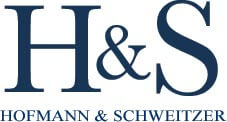 Falls, struck-by injuries, and collapses are common types of crane injuries on construction sites, many of which claim workers' lives every year. Our New York construction injury lawyers explain state regulations to protect operators and employees while working around derricks and what to do when site owners disregard safety protocol.
Falls, struck-by injuries, and collapses are common types of crane injuries on construction sites, many of which claim workers' lives every year. Our New York construction injury lawyers explain state regulations to protect operators and employees while working around derricks and what to do when site owners disregard safety protocol.
NY Industrial Code Provisions for Derricks on Construction Sites
NY Labor Law 241 requires owners and contractors to make construction sites as safe as possible for workers. Under Section 241(6), owners and contractors must comply with any rules made by the Commissioner of the Department of Labor to carry out the provisions of the law.
The Department of Labor has created specific construction safety rules in Part 23 of the New York Industrial Code to protect people employed in construction, demolition, or excavation work. N.Y. Comp. Codes R. & Regs. Tit. 12 § 23-8.4 set forth the following general provisions for derricks:
- Foot blocks. The foot blocks of every derrick must be securely braced, supported, and firmly anchored against movement in any direction.
- Number and spacing of guys. If the top of a guy derrick mast is more than 25 feet high, it must be secured by at least six wire rope guys spaced in a way that makes the angles between adjacent guys approximately equal.
- Attachment of guys. Wire rope guys must be secured by weldless steel sockets, thimble-and-splice connections, thimbles with proper size and numbers of rope clips, or cast steel guy plates with grooved bearing surfaces. Cast steel guy plates with grooved bearing surfaces must be the same shape and size as the wire rope thimbles using a spliced or wire rope clip attachment. All guys must be attached to permanent solid construction or to substantial "dead men" securely anchored in the ground.
- Breast-type derricks. Breast-type derricks must be guyed from both the front and rear. If front guys are not possible due to derrick operation, provisions must be made to prevent these derricks from tipping over backward. Breast-type derricks operated by hand power must have hand grips securely and positively fastened to the shaft, and a ratchet and pawl that will hold any load must be provided.
- Derrick construction. Each derrick's mast, boom, frame, and related parts must be constructed of suitable steel or made of selected wood with the proper strength and durability. On derricks where the booms are larger than the masts, the gudgeon pins, mast tops, goosenecks, and other fittings must be securely fastened to the tops of the masts to prevent parts from pulling out when the booms are raised.
- Capacity charts. A capacity chart must be provided for every derrick and posted somewhere on the job site where it is easily legible for relevant users. No derrick may lift any load that exceeds the applicable maximum specified on its capacity chart. If no capacity chart is furnished by the manufacturer or builder of the derrick, one may be prepared and certified by a professional engineer licensed to practice in the State of New York. A copy of the capacity chart must be submitted upon request to the commissioner.
- Boom raising. The boom of any derrick must not be raised from the level of the surface on which the derrick rests other than by the use of its own hoisting equipment. The design, construction, and length of the boom must not place any undue stress on the derrick structure or mechanism during raising operations.
Learn Your Options After a New York Derrick Injury
If you or someone you love was hurt by a derrick while doing your job, the attorneys at Hofmann and Schweitzer can investigate the incident and determine whether a site owner or third party could be liable for your injury costs. Call us today at 800-362-9329 to have us explain your next steps at no charge to you, or read our FREE guide, Hurt in a Construction Accident? You’re Not Alone.
|
Related Links: |

